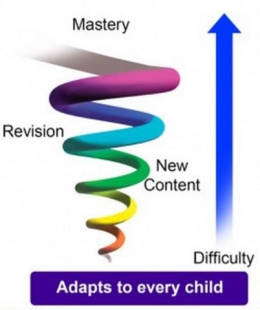When an educational center's teaching staff attempts to arrange what students will study throughout the course, it is common to discuss factors such as the objectives to be attained, the content to be taught, and the teaching method.
However, it is typical for teachers to set aside or disregard how to organize the knowledge that will be taught throughout the year, restricting themselves to teaching them one after the other and with the only goal of waiting for pupils to memorize and exhibit it in an exam.
In recent years, there has been an attempt to improve this approach of teaching to increase meaningful learning by ensuring that what teachers taught in class is not just memorized, but also comprehended and linked to other information. In this context, the notion of a spiral curriculum is very important, since it is a method of arranging information throughout the academic year, as we shall see in further depth in this article.
The spiral curriculum is an educational program that includes a review of previously explained topics throughout the course. This review is done iteratively, so in class, previously observed concepts and subjects are covered again and again.
One should not make the mistake of assuming that this form of education is just repeating the knowledge presented repeatedly shallowly, expecting that the pupils would recall what teachers have imparted to them in detail. The goal of the spiral curriculum is to build knowledge by deepening it, stimulating thought, and exploration.
Jerome Bruner was the first to articulate this concept in 1960. This New York psychologist discovered that teachers who taught mathematics, history, and science and were able to successfully impart their knowledge used the following teaching style to varying degrees.
They began by presenting a set of fundamental notions or procedures intuitively. After acquiring these fundamental concepts, they were gradually reconstructed with increased complexity, as well as linked to previously gained information. Because of this technique, the aforementioned subjects were effectively mastered, regardless of how much substance they included or how tough they appeared to be.
Bruner maintained the premise that it should center courses on the study of socially valued concerns, ideas, and values using this approach of structuring information. The goal was for the students to gain relevant information that they could apply in their everyday lives, allowing them to operate as socially appropriate adults.
According to Bruner, the fundamental structures of curriculum subjects must be converted to the three fundamental modes of representation that he proposes: perceptual, iconic, and symbolic, depending on whether the predominant thing in the students' way of assimilating reality is action, intuition, or conceptualization.
Bruner believed pupils should be encouraged to investigate on their own and to create decisions. To do this, he advised to break with scholastic formalism and rewarding intuitive cognition, which is precisely undervalued by formalism.







